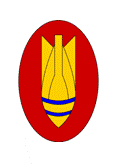

101 (City of London) Engineer Regiment
(Explosive Ordnance Disposal & Search)
Regimental Association
85 Years of Bomb Disposal - Royal Logistics Corps 
321 EOD Squadron RLC were first deployed to NI in May 1970 where they were faced with a significant escalation of IEDs, car bombs being the ‘delivery platform of choice’. Furthermore, there was a continuous evolution of capability as the terrorists device grew in size and complexity. In response, the Ammunition Technical Officer (ATO) ‘golfbag’ of equipment was rapidly developed to deal with higher explosive payloads, more advanced arming mechanisms (mechanical timers to remotely initiated for example), and anti-handling measures designed to trick the ATO into making a mistake or making a bad decision with devastating consequences. Such was the work of the Provisional Irish Republican Army.
 Typically, 321 EOD Company teams are led by an ATO who is known as the Number 1 Operator, making the decisions and ultimately going forward to deal with a device. The Number 2 operates the Remote Control Vehicle (historically the WHEELBARROW but now giving way to more modern robots) used to minimise the risk of injury and carry out the RSP remotely prior to the final manual approach. The Number 3 is the signaller and Electronic Countermeasures specialist with the Number 4 being the infantry soldier acting as body guard for the team. In the mid 70’s these teams were given the call-sign ‘Felix’ with a cat (with nine lives) being the officially recognised badge of 321 EOD Company.
Typically, 321 EOD Company teams are led by an ATO who is known as the Number 1 Operator, making the decisions and ultimately going forward to deal with a device. The Number 2 operates the Remote Control Vehicle (historically the WHEELBARROW but now giving way to more modern robots) used to minimise the risk of injury and carry out the RSP remotely prior to the final manual approach. The Number 3 is the signaller and Electronic Countermeasures specialist with the Number 4 being the infantry soldier acting as body guard for the team. In the mid 70’s these teams were given the call-sign ‘Felix’ with a cat (with nine lives) being the officially recognised badge of 321 EOD Company.Between 1969 and 2007, 20 Bomb Disposal operators lost their lives with 24 being seriously injured dealing with over 54,000 call-outs. Despite the peace process and formal end to Op BANNER, dissident republican terrorist are still keeping the Unit active today.

